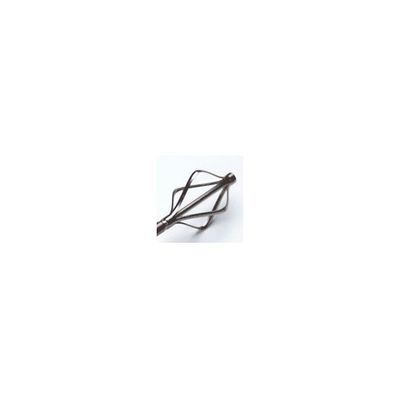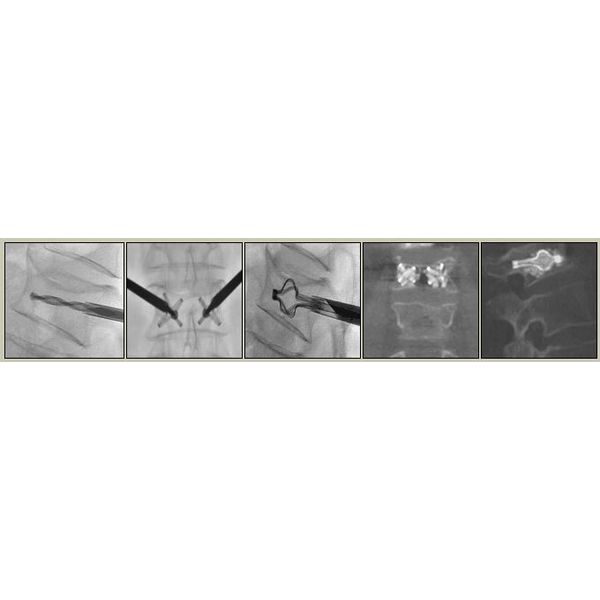

- Home
- Companies
- SpineAlign Medical, Inc.
- Products
- SpineAlign VerteLift - Nitinol Implant ...

SpineAlign VerteLift - Nitinol Implant System for Transforming the Treatment of Painful Vertebral Compression Fractures
SpineAlign’s nitinol implant is a dynamic tool with unique advantages for treating painful osteoporotic vertebral compression fractures. SpineAlign offers spine specialists the ability to choose fracture-specific implants in sizes and configurations to fit each patient. The VerteLift Implant’s superior flexibility allows it to be precisely placed - even repositioned if necessary.
The Implant’s super-elastic struts are designed to support vertebral endplates, reducing the fracture and maintaining lift until bone cement is injected . Bone cement flows around the struts and interdigitates with the cancellus bone, resulting in a “contained fill” that may reduce the potential for cement leakage.
With the injection of bone cement, the VerteLift Implant’s unique flexibility is transformed into reinforcing strength -- greater than PMMA alone¹—delivering long-lasting structural support, vertebral stability and pain relief.
Prior to injection of cement, an expanded VerteLift Implant can not only be re-positioned but completely withdrawn, if necessary.

Osteoporosis and Vertebral Compression Fractures
Osteoporosis is a silent progressive disease, characterized by a loss in bone mass, that gradually weakens bones causing them to become brittle. Osteoporosis leads to abnormally porous bone that is easily compressed like a sponge. The disease weakens bones, not only in the spine but also in other parts of the body, and can result in fractures (breaks). Because there are no obvious warning signs, osteoporosis frequently goes undiagnosed and progresses painlessly until there is a fracture.
According to the International Osteoporosis Foundation osteoporosis affects approximately 75 million people in Europe, USA and Japan¹. The National Osteoporosis Foundation in the USA estimated that by 2010, 12 million people in USA, mostly post-menopausal women, will be osteoporotic and another 34 million individuals will have low bone mass putting them at risk of becoming osteoporotic².
A vertebral compression fracture (VCF) is one of the most frequent problems associated with osteoporosis. A compression fracture may occur with little or no trauma causing the vertebra to collapse. This may cause pain, which can range from mild to severe. In spite of the pain, many patients do not seek treatment, believing that back pain is just a natural part of aging. Over time, if multiple vertebral fractures occur the condition can lead to a deformity of the spine characterized by a forward bending of the back known as “kyphosis” or Dowager’s hump. Kyphosis can cause a number of health issues Including loss of appetite, problems with sleep, and decreased lung capacity (labored breathing), all of which lead to quality of life problems.
¹ EFFO and NOF (1997) Who are candidates for prevention and treatment for osteoporosis? Osteoporos Int 7:1.
² NOF (2002) America`s bone health: the state of osteoporosis and low bone mass in our nation.
